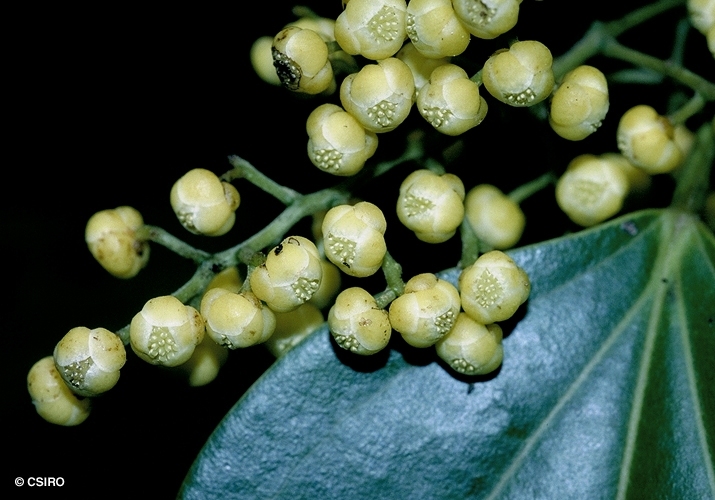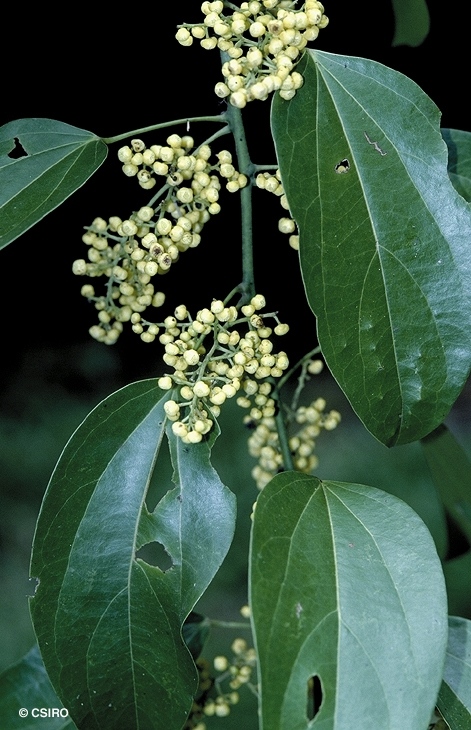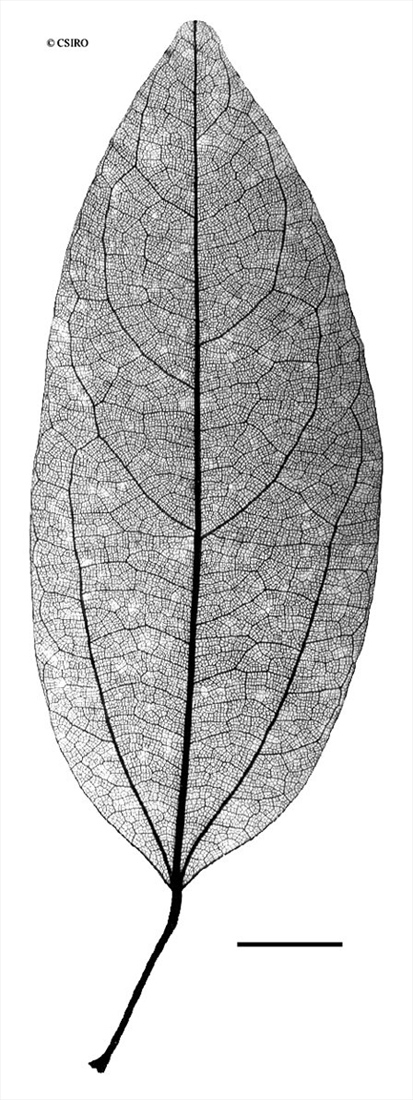Australian Tropical Rainforest Plants - Online edition
Hypserpa polyandra Becc.




Beccari, O. (1877) Malesia 1: 148. Type: New Guinea, Andai, O. Beccari,P. P. 552. Syn: FL. Aru Is., 1873, O. Becari s.n. Syn: K.
Vine stem diameters to 14 cm recorded. 'Growth rings' very distinct in transverse sections.
Leaf blades about 7-14 x 3.5-7.5 cm, petioles about 2-4.5 cm long. Leaf blades +/- 3-veined near the base. Reticulate venation very well developed with virtually all reticulations closed, i.e. complete. The leading shoot forms a sort of tendril and loops around objects. Oak grain visible in the larger twigs. Pulvinus elongated, extending well beyond the petiole-leaf blade junction.
Male flowers: Inflorescence much shorter than the leaves, flowers about 4-5 mm diam., subtended by 4 sepal-like bracts about 1 mm long. Sepals seven or eight in two whorls of three or four. Sepals about 3 mm long, petaloid, boat-shaped. Petals eight or nine per flower, each petal about 1.5 mm long, fleshy, resembling nectary glands. Stamens 30-35 per flower, each about 0.8-1 mm long. Anthers +/- sessile. Female flowers: Tepals about 10 per flowers. Outer tepals larger than the inner tepals. Inner tepals +/- orbicular, cupped, about 1.5 mm diam. Carpels about 1 mm long.
Fruits, i.e. fruiting carpels, about 10-12 mm diam. Endocarps about 10 mm diam. rather thick and hard, somewhat flattened, surface sculptured and deeply grooved. Seeds flattened, about 9-10 mm diam. Endosperm white. Embryo white, curled almost forming a circle. Cotyledons about 8 mm long and about as wide as the radicle. Radicle about 8-9 mm long.
Features not available.
Occurs in NT and CYP. Altitudinal range probably not very great, from near sea level to 100 m. Grows in gallery forest or lowland rain forest. Also occurs in Malesia and the Pacific islands.





